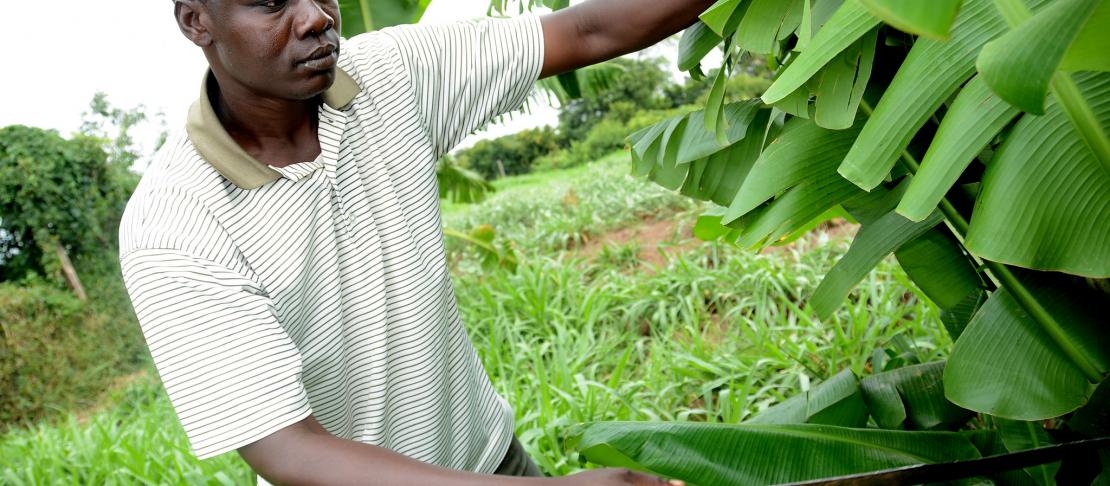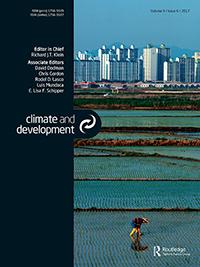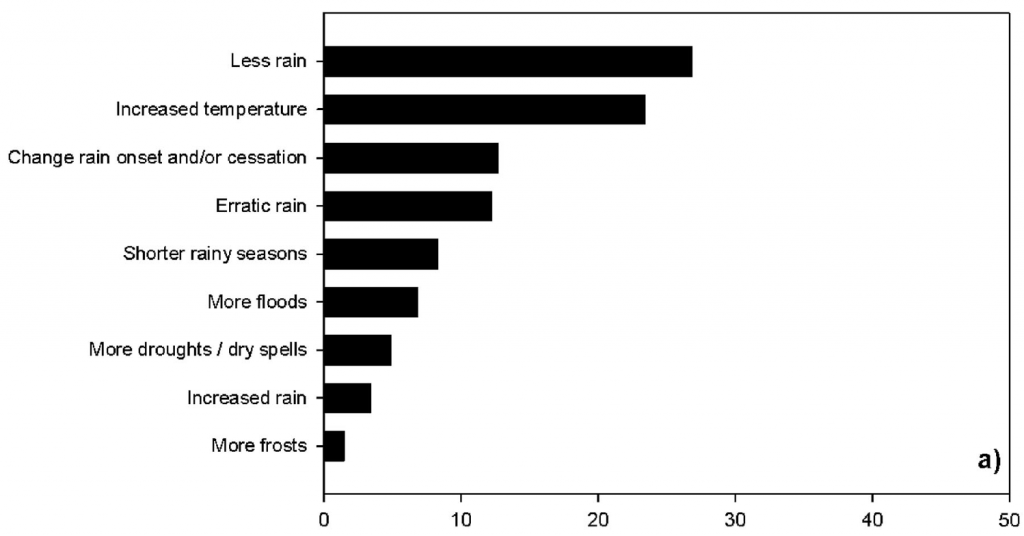Developing future adaptation programmes: lessons from present actions

Case studies from Kenya reveal barriers of climate change adaptation and provide lessons for future adaptation programmes.
Most farming systems in Sub-Saharan Africa rely on rain-fed agriculture, which is inherently highly vulnerable to climate change. Suitable land for agriculture in Africa is projected to substantially decrease due to climatic change; this, in turn, would lead to decreased production of key cereals.
While smallholder farmers in Africa have shown evidence in the past of being able to adapt to climatic risks, the predicted magnitude and pace of change in climate is unprecedented and will require both progressive and most likely transformative change.
A new paper, co-authored by Maren Radeny, Science officer of CCAFS East Africa, assesses smallholder farmers’ climate adaptation strategies in East Africa, by reviewing literature on climate risks and adaptation strategies. The paper draws on two case studies undertaken in Wote and Lower Nyando in Kenya to explore the barriers to climate adaptation of farmers.
Most widespread climate risks in East Africa
Although the frequency of climatic risks in East Africa vary among the different agro-ecological zones and countries, the reviewed studies indicate that less rainfall and increased temperature are the most commonly experienced by smallholder farmers in the region.

Frequency of climatic risks in East Africa. (Figure 3a in the paper)
Adaptation strategies
When all sites are pooled together, the most common adaptation strategy consisted of changes in crop management practices (planting time, conservation agriculture, agricultural inputs, varietal changes, changes in planted crops, mixing long- and short-season crops and changing crop area).

Frequency of plausible adaptation strategies for East Africa. (Figure 5a and 5b in the paper)
The analysis shows that proximity to major cities influences farmers’ climate adaptation strategies; more farmers living closer to a major city use adaptation strategies compared to those living far. Moreover, the distribution of countries per adaptation strategy implies that Kenya had the highest proportional count for most adaptation strategies. For example, all reports on changing livelihoods as an adaptation strategy were made in Kenya only.
Barriers to adaptation
Based on the survey in the case study sites of Wote and lower Nyando, drought is a key climatic risk faced by farmers in both sites, and it’s also a cross-cutting risk across gender, with over 60% of both men and women perceiving drought as a critical climate risk to their agricultural livelihood.
In both sites, the preferred adaptation strategies, as identified by farmers, would ensure that a household can meet its basic nutritional requirements through the production of food security crops and can also invest in high-value crops so as to be able to get enough income to support the implementation of flood and drought management strategies.
The authors write in the study that farmers in both sites could describe their preferred adaptation strategies but that they had not yet been able to fully implement these strategies, which suggests the presence of adaptation constraints, including:
- Limited land holdings: Most farmers in the target sites owned very small pieces of land; this limits the economic profitability of high value crops and makes it difficult for them to invest in strategies for drought and/or flood management.
- Weak institutional arrangements: Some of the adaptation strategies, such as flood management, require community effort.
- Poor farm planning: Most of the surveyed farmers believed they need a lot of land to invest in the adaptation strategies.
- Lack of capital investment: Without financial resources, it is difficult for a farmer to invest in high-value crops, generate some income and use such income to implement adaptation strategies.
Lessons learned and way forward
The case studies provide examples of the range of measures adopted by farmers in order to adapt to climate change and highlight the importance of collaborative effort between local and external organizations.
This study provides lessons to consider in designing programmes aimed at supporting climate change adaptation for smallholder farmers in East Africa. For one, such programmes need to consider the variations in institutional settings across the region; more specifically, they should take into account that farmers located far from major cities in East Africa tend to have fewer opportunities for adapting to climate change.
The programmes also need to develop strategies adapted to current and projected future agro-ecologies. In addition, they need to incorporate farmers’ knowledge since various studies demonstrated that farmers’ decision to adapt to climate change is influenced by their perceptions of climatic risks and plausible adaptation strategies. Given that farmers’ knowledge can be inaccurate, the programmes on climate change adaptation would also benefit from providing targeted farmers with improved weather services and information on the costs and benefits of plausible adaptation options.
In addition, the programmes need to foster collaborative effort between key local and external stakeholders who can influence farmers’ perceptions and hence their decision to adapt to climate change.
Download the paper: Gbegbelegbe S, Serem J, Stirling C, Kyazze F, Radeny M, Misiko M, Tongruksawattana S, Nafula L, Gakii M, Sonder K. 2017. Smallholder farmers in eastern Africa and climate change: a review of risks and adaptation options with implications for future adaptation programmes. Climate and Development
This work was supported by CGIAR Research Program on Climate Change, Agriculture and Food Security [grant number A4007].
Lili Szilagyi is the Communications consultant for the CCAFS Program Management Unit and CCAFS East Africa.






